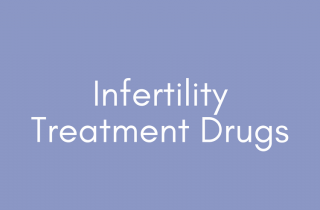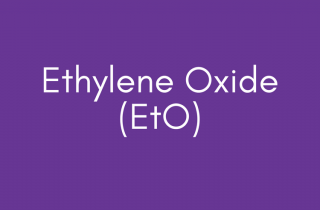Bovine Growth Hormone (rBGH) or Recombinant Bovine Somatotropin (rBST)
At a Glance
Recombinant somatotropin, rBST (previously called bovine growth hormone), is a genetically engineered hormone injected into dairy cows to increase milk production. Milk from rBST-treated cows is used in dairy products including ice cream, butter, cheese and yogurt.
The United States does not require companies to label the use of rBST in their products, although it was banned in the European Union in 1990. The use of rBST in dairy cows has been shown to increase the concentrations of IGF-1, a protein naturally found in milk.
Though research is mixed on the extent to which dairy consumption is linked to increased cancer risk, higher blood levels of IGF-1 have been linked to increased risk for pre-menopausal breast cancer.
What is rBST?
rBST is a synthetic hormone created to increase milk production in dairy cows. In 1993, the U.S. Food and Drug Administration (FDA) approved Monsanto’s genetically modified variation of the natural hormone for dairy cow usage. rBST is widely used in the United States dairy industry, yet it is not permitted in the European Union, Canada, and many other countries. It is injected into dairy cows and has been shown to increase milk production by 10 to 15 percent.[1]
Where is rBST found?
The synthetic hormone rBST is found in items that use milk in their formation, such as the dairy products cheese, ice cream, butter and yogurt. Milk derivatives are used in many other food products such as candy bars, chocolate, cakes and even some chips.
What evidence links rBST to breast cancer?
Research on the link between rBST and breast cancer has produced mixed results, and more study is needed to evaluate the potential association. Studies have shown that rBST raises the concentration of insulin-like growth factor-1 (IGF-1) in treated cow milk.[2],[3] During development of the mammary system, IGF-1 increases cell proliferation and the formation of mammary ducts.[4],[5]
IGF-1 has been shown to stimulate growth of human breast cancer cells.[6] Furthermore, research has revealed an increased risk for pre-menopausal breast cancer in women with higher levels of IGF-1 in their blood.[7] Another study found that high total dairy intake reduced the risk for pre-menopausal breast cancer.[8] More research is needed to determine the overall effects of dairy-specific nutrients and IGF-1 on breast cancer risk.
A recent review of the relevant epidemiological data revealed no associations between consumption of cow milk and breast cancer.[9] Differences in results may reflect different kinds of dairy consumed and measured, with milk, and especially low-fat milk, being more likely to offer some protective effect than higher-fat (and higher-IGF-1-containing) milk or other dairy products.[10] This may be due to a potential protective effect of calcium, an important component of dairy products.[11],[12]
Who is most likely to be exposed to rBST?
- People who consume dairy products are most likely to be exposed. The United States does not require labeling of products from hormone-treated cattle, so individuals may be unknowingly exposed to rBST.
Who is most vulnerable to the health effects?
- Research has shown an increased risk of pre-menopausal breast cancer in women with high IGF-1 in their blood, which can be increased by rBST, though studies seem inconclusive.
What are the top tips to avoid exposure?
- Use products labeled rBST free. Labeling products containing rBST is not required, but many companies voluntarily indicate that they do not use dairy from rBST treated cows.
Reviewed 2019
[2] Daxenberger, A et al. “Increased milk levels of insulin-like growth factor 1 (IGF-1) for the identification of bovine somatotropin (bST) treated cows.” The Analyst 123, 12 (1998): 2429-35. doi:10.1039/a804923h.
[3] Chagas, Carlos E A, Marcelo M Rogero and Lígia A Martini. “Evaluating the links between intake of milk/dairy products and cancer.” Nutrition Reviews 70, 5 (2012): 294-300. doi:10.1111/j.1753-4887.2012.00464.x.
[4] Kleinberg, D.L., Ruan, W. “IGF-I, GH, and Sex Steroid Effects in Normal Mammary Gland Development.” Journal of Mammary Gland Biology and Neoplasia 13, 4 (2008): 353–360. doi:10.1007/s10911-008-9103-7.
[5] Outwater, J L, A Nicholson and N Barnard. “Dairy products and breast cancer: the IGF-I, estrogen, and bGH hypothesis.” Medical Hypotheses 48, 6 (1997): 453-61. doi:10.1016/s0306-9877(97)90110-9.
[6] Outwater, J L, A Nicholson and N Barnard. “Dairy products and breast cancer: the IGF-I, estrogen, and bGH hypothesis.” Medical Hypotheses 48, 6 (1997): 453-61. doi:10.1016/s0306-9877(97)90110-9.
[7] Hankinson, S E et al. “Circulating concentrations of insulin-like growth factor-I and risk of breast cancer.” Lancet 351, 9113 (1998): 1393-6. doi:10.1016/S0140-6736(97)10384-1.
[8] Hjartåker, Anette, Magne Thoresen, Dagrun Engeset and Eiliv Lund. “Dairy consumption and calcium intake and risk of breast cancer in a prospective cohort: the Norwegian Women and Cancer study.” Cancer Causes & Control 21, 11 (2010): 1875-85. doi:10.1007/s10552-010-9615-5.
[9] Parodi PW. “Impact of cows’ milk estrogen on cancer risk.” International Dairy Journal 22, 1 (2012): 3-14. doi:10.1016/j.idairyj.2011.08.006.
[10] Chagas, Carlos E A, Marcelo M Rogero and Lígia A Martini. “Evaluating the links between intake of milk/dairy products and cancer.” Nutrition Reviews 70, 5 (2012): 294-300. doi:10.1111/j.1753-4887.2012.00464.x.
[11] Hjartåker, Anette, Magne Thoresen, Dagrun Engeset and Eiliv Lund. “Dairy consumption and calcium intake and risk of breast cancer in a prospective cohort: the Norwegian Women and Cancer study.” Cancer Causes & Control 21, 11 (2010): 1875-85. doi:10.1007/s10552-010-9615-5.
[12] Zhang, Cai-Xia et al. “Dairy products, calcium intake, and breast cancer risk: a case-control study in China.” Nutrition and Cancer 63, 1 (2011): 12-20. doi:10.1080/01635581.2010.516478.






